| TALES OF HEATH & POND |
VISITOR'S GUEST BOOK | HISTORY OF THE HEATH & POND | GUESTS' PHOTOGRAPHS | SOURCES OF INFORMATION | VIDEOS | SITE MAP |
Redwings
To see a larger copy of each image click on it; to see the next large image click at the right of the image, to go back click on the left of the image. To close a large image click on the cross in the top right hand corner.
New photographs are usually added to the bottom of the page - click to go to the bottom of this page
2021 |
||
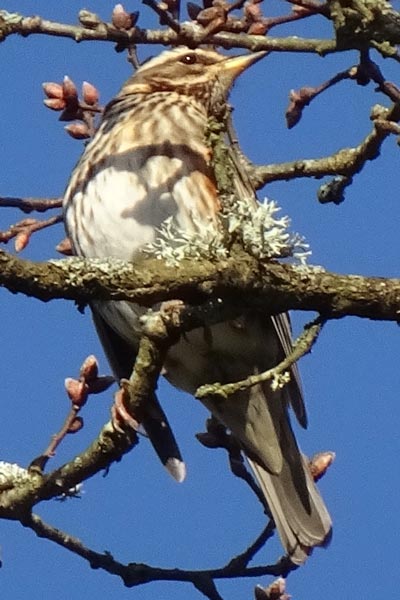 |
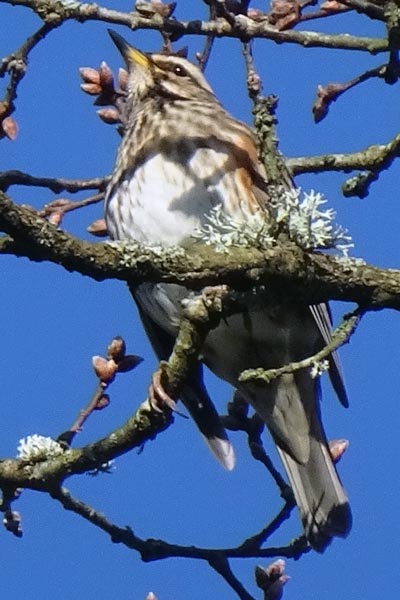 |
|
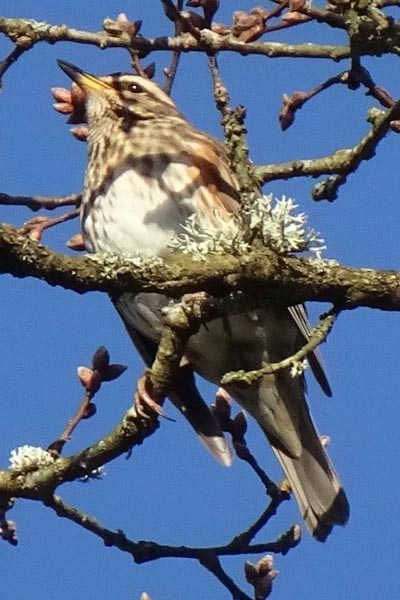 |
Redwings migrate here at night - on clear evenings listen out for their 'tsee' call overhead. They can often be spotted in flocks with Fieldfares, moving from bush to bush looking for food. Apples and berry-producing bushes like Hawthorn may attract redwings into the garden. Some redwings come from Iceland to winter in Scotland and Ireland. Others come from Russia and Scandinavia to winter in southern England and further south in Europe. In spring, redwings leave the UK for their northern breeding territories, where they nest low down in boggy woodland and birch forest. Many redwings that spent the winter in Spain and southern Europe also stop off in eastern England to refuel as they head back north. Each year, a few pairs remain to breed in Scotland. Classified in the UK as Red under the Birds of Conservation Concern 4: the Red List for Birds (2015). Protected in the UK under the Wildlife and Countryside Act, 1981. Listed as Near Threatened on the global IUCN Red List of Threatened Species
|
|
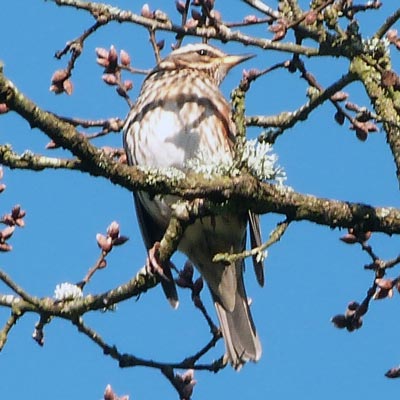 |
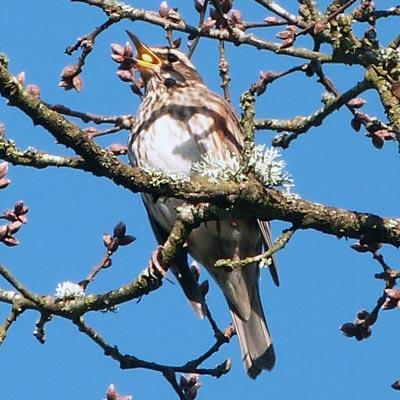 |
|
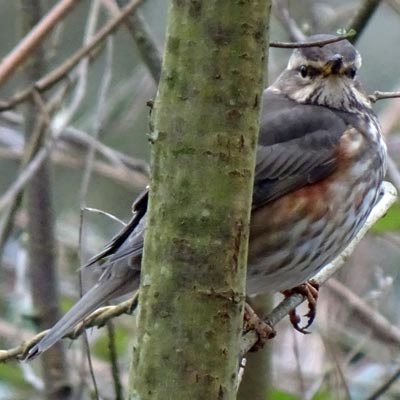 |
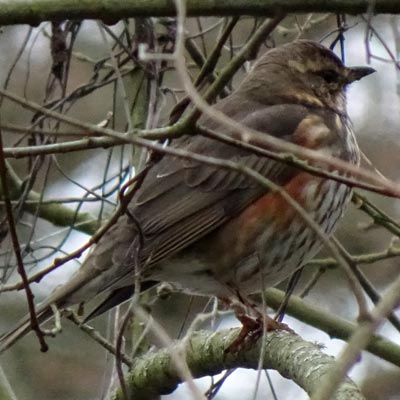 |
|
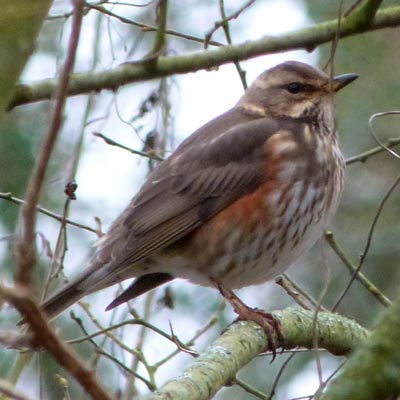 |
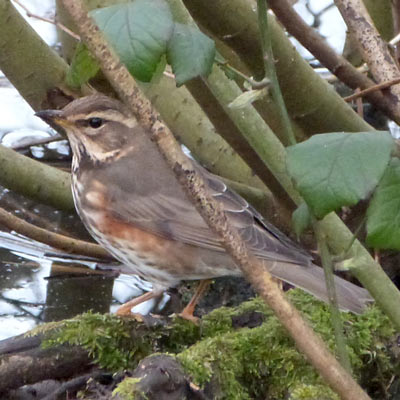 |
|
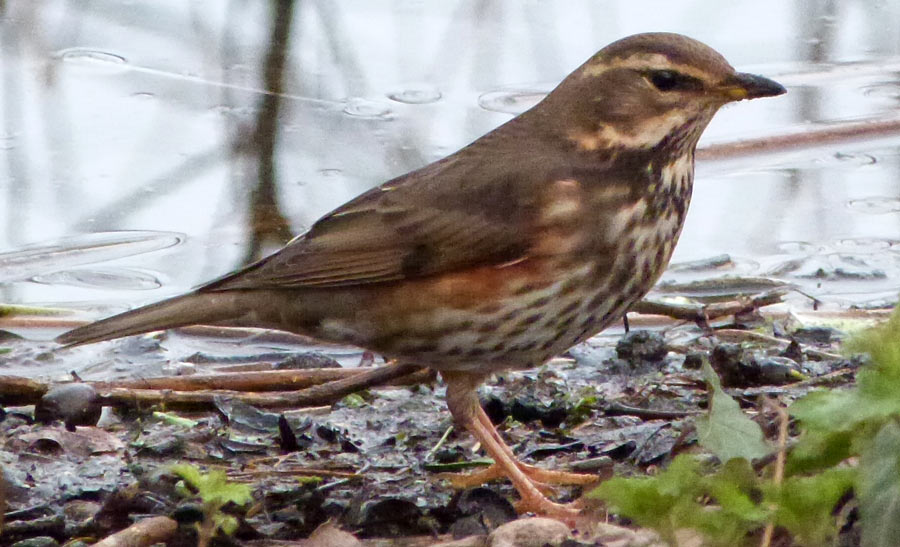 |
||
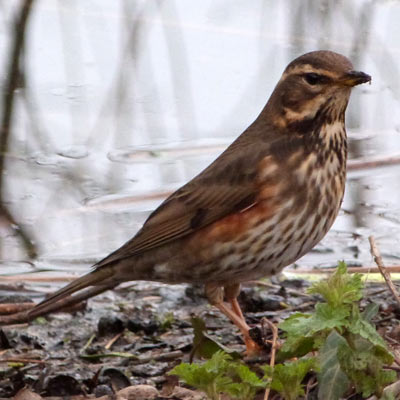 |
||
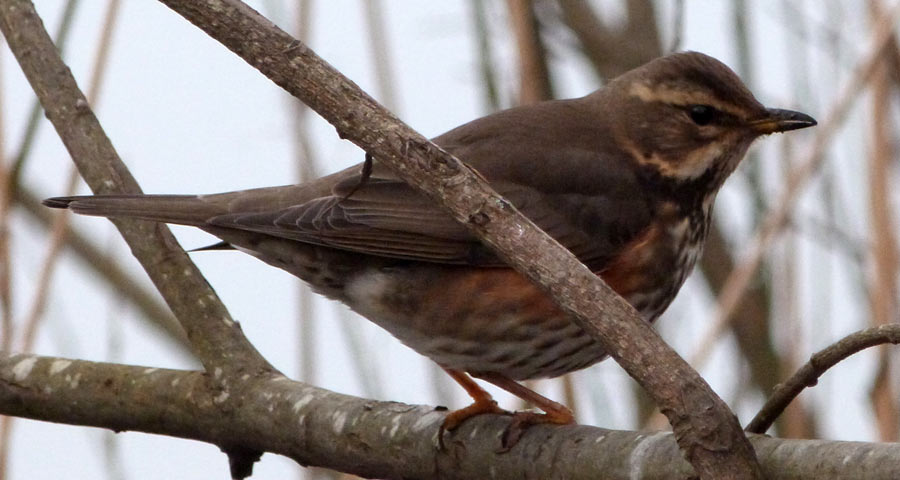 |
||
| Go to the top of this page | ||
 The redwing is a small thrush that visits the UK in the winter to feast on berry-laden bushes in hedgerows, orchards, parks and gardens.
The redwing is a small thrush that visits the UK in the winter to feast on berry-laden bushes in hedgerows, orchards, parks and gardens.